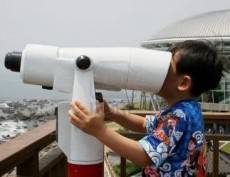April 9, 2014
The Wall Street Journal (and others) are wrong about human resources
 Everybody ready? Great. Then it’s time for another round of HR bashing and a tipping point for more existential navel-gazing for everyone’s favourite corporate pantomime villain – the human resources department. Or is it? You can choose your own particular moment at which the crowd boos and hisses at the bad guys in HR, but hot on the heels of the Lucy Adams debacle at the Beeb and a report that finds human resources to be the profession with the most “can’t do” attitude comes an article from, of all places, the Wall Street Journal that looks at what it means to do away with your HR function altogether. The restrictions of the word count being what they are, coupled with the way sweeping generalisations provide the quickest way to guarantee a bump in readership, the WSJ takes the broadest of brushes to add another coat to the painting of HR as an ancillary function that, far from oiling the wheels of commerce, is often a distraction at best and, at worst, an active obstruction.
Everybody ready? Great. Then it’s time for another round of HR bashing and a tipping point for more existential navel-gazing for everyone’s favourite corporate pantomime villain – the human resources department. Or is it? You can choose your own particular moment at which the crowd boos and hisses at the bad guys in HR, but hot on the heels of the Lucy Adams debacle at the Beeb and a report that finds human resources to be the profession with the most “can’t do” attitude comes an article from, of all places, the Wall Street Journal that looks at what it means to do away with your HR function altogether. The restrictions of the word count being what they are, coupled with the way sweeping generalisations provide the quickest way to guarantee a bump in readership, the WSJ takes the broadest of brushes to add another coat to the painting of HR as an ancillary function that, far from oiling the wheels of commerce, is often a distraction at best and, at worst, an active obstruction.






















June 19, 2014
Virtually Uninspiring, Cautiously Aspirational – award winning offices for the VUCA world.
by Simon Heath • Architecture, Comment, Workplace design
(more…)